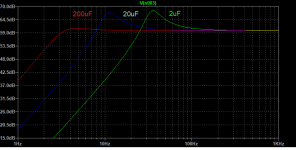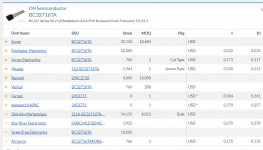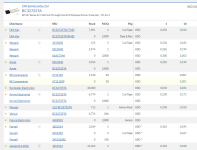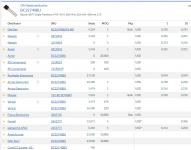Would that be an issue with the low output impedance of the regulators? At 20Hz looks like around 2k. I mean for testing to see if the regulator + denoiser is working or not for example.
Would that be an issue with the low output impedance of the regulators? At 20Hz looks like around 2k. I mean for testing to see if the regulator + denoiser is working or not for example.
DSelf Pre Pre has negative input impedance in LF -- so the 220uF cap works fine, but if you want to use a 10uF film cap with very low leakage and low noise, a lot of other values have to change.
When we did the test for the Linear Audio article, noise ranked lowest in terms of importance. But some regulators will mush up transients as the error amplifier is slower than the music!
Are you sure about that?
I might be wrong, but I do not see any good reason for such a behaviour (negative impedance)
I might be wrong, but I do not see any good reason for such a behaviour (negative impedance)
For me, this points to an inductive behaviour probably caused by the DC servo acting as a gyrator.
A true negative resistance would mean the circuit is unstable with its input open, and I don't think it is the case
A true negative resistance would mean the circuit is unstable with its input open, and I don't think it is the case
When I was playing around with it I found that as you go higher than 220uF it goes back to having the rising gain, so there is a sweet a sweet spot, I thought 560uF was the sweet spot, but I really don't know enough to verify that.
Playing with the sim I notice that using BC327 instead of 2N4403 the noise goes even lower. Also it seems that using the lower gain version BC327-25 results in even lower noise than with BC327-40.
Would this scale as well for the BC327-16 gain version? There's no spice model for it and I can't simulate.
With 3 transistors the sim shows the noise around the 0.27nV/sqrtHz value.
Would this scale as well for the BC327-16 gain version? There's no spice model for it and I can't simulate.
With 3 transistors the sim shows the noise around the 0.27nV/sqrtHz value.
I replaced the 4x2N4403 with 4xBC327-25 and now the noisefloor is at around 0.485nV/sqrtHz from 0.55nV/sqrtHz, between 10kHz-20kHz where my ADC is clean.
FWIW, ZTX550 is a close replacement for BC327 (which is EOL). ZXTP2027F is even a little better!
Looks good to me.
View attachment 932594
Found a couple issues:
1. JAVA produces the measurement above, ASIO produces the measurement below, at least on my system.
2. The total noise, in the upper righthand corner, is now lower, I changed the transistors in the dienoiser to BC8*7 and was able to get them stable. I don't think the transistors I had in there before were stable.
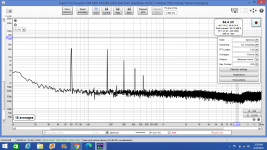
BTW, I had the cursor at 1kHz but it must have moved when I snipped it. Noise at 1KHz was 440pV.
FWIW, ZTX550 is a close replacement for BC327 (which is EOL). ZXTP2027F is even a little better!
I do have a single ZTX550/ZTX450 pair. I think I tested it in the discrete supply and performed on par with BC3x7.
Are the smd equivalents (BC8x7) also EOL?
BC327 (which is EOL)
This is not right, both Onsemi (LEGACY FAIRCHILD) BC327 and BC337 are still active in different grades
This is not right, both Onsemi (LEGACY FAIRCHILD) BC327 and BC337 are still active in different grades
Wasn't available at DK -- seems that the lead-free variety have different suffix.
I was wondering, would I also need to subtract the ADC noise from the noise measurements I make? Shorting the ADC I get about 0.28nV/√Hz. Of-course this is with the x1000 multiplier, so it's a sort of virtual noise level. The actual noise is 280nV/√Hz, but doesn't it still get added to the LNA+DUT noise?
Attachments
That puts the LNA around the 0.4nV/sqrtHz in the 10kHz-20kHz area where I looked.
I'm curious to see if I can reliably extract the LNA noise in the LF range where the ADC adds extra noise.
edit: no I can't, the ADC noise is too high to extract any meaningful value.
I'm curious to see if I can reliably extract the LNA noise in the LF range where the ADC adds extra noise.
edit: no I can't, the ADC noise is too high to extract any meaningful value.
Last edited:
- Home
- Amplifiers
- Power Supplies
- Measurement data and techniques for Elvee's De-Noizator: all implementations
